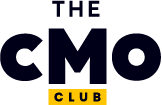If you’re like most marketing leaders, you know that social media content is more than just a brand awareness play. It’s a critical piece of your demand gen engine. But keeping up with multiple social media profiles, maintaining a solid social media marketing strategy, and actually driving audience engagement is a whole different challenge.
I get it. You’re juggling a million things, and social media management can feel like a never-ending cycle of content creation, scheduling, and analytics. The good news is you don’t have to do it all manually. AI assistants and social media management platforms can help you automate the busywork, personalize content, and prove ROI without burning out your team.
In this guide, I’ll walk you through how to scale your social media content strategy without losing your mind. You’ll learn how to use AI, data-driven insights, and smart workflows to stay ahead of the game and actually make social media work for your business. Let’s dive in.
What Social Media Content Management Is, and What It Isn’t
You’re experienced, and you understand the importance of social media content management. As your business grows, you’ll likely bring on a social media marketer or manager to oversee the daily execution and strategy. But before that, it’s crucial to level set on what social media content management isn’t because understanding what to avoid is just as important for your long-term success.
Social media content management is not a “set it and forget it” system. Automating content without engagement won’t build a brand. Posting without a strategy won’t drive results. True social media content management is about planning, optimizing, and engaging, not just broadcasting. It requires real-time audience interaction, social listening, and data-driven decisions to make an impact.
Successful social media content management also includes monitoring brand sentiment, responding to audience interactions, and leveraging social media management platforms and AI assistants to streamline processes and improve performance. Without these elements, even the most well-planned content strategy will fall flat.
If you treat social media as a one-way content machine, you’ll struggle to build meaningful connections. But when you approach it as a dynamic, evolving strategy that aligns with your business goals, adapts to audience behavior, and leverages the right tools, it becomes a powerful engine for growth.
Current Social Media Trends and User Behaviors
Considering how much is already behind us, it begs the question: What’s coming next? While no one has the crystal ball to say exactly what will emerge on the social media scene or in algorithms in coming years, there are predictions based on social media marketing trends and user behaviors:
- Major platforms will continue to grow. Smart Insights says data indicates that Instagram is predicted to increase its users by 50 million in 2024, to 1.4 billion. TikTok is expected to increase its user base by 8%, to 900 million.
- Social media will become King of the advertising world. Exploding Topics says more than $521 billion was spent on digital ads in 2021, and experts say that number could reach $876 billion in 2026.
- Audio content will gain more ground. Pew Research Center says the share of Americans who listen to podcasts has substantially increased over the last decade. As of 2023, 42% of Americans ages 12 and older have listened to a podcast in the past month, up from 12% in 2013.
- Social platforms will rival search engines. According to HubSpot’s 2024 Consumer Trends Report, one in four consumers prefer to search for brands through social media over search engines and more than 30% of those surveyed are using AI chatbots for everyday research.
- User privacy will be the key to sustainable growth. Checkr revealed that 73% of Americans surveyed felt extremely or moderately concerned about the privacy of their data shared online. This will need to be addressed by current and emerging platforms in order to stay relevant.
Choosing the Right Social Media Platforms for SaaS Growth
A successful social media content management strategy doesn’t mean being everywhere at once. Instead, focus on the platforms that align with your audience and business goals. Here’s a breakdown of the key platforms and how they fit into a SaaS-focused content strategy.
LinkedIn: The B2B Powerhouse
For SaaS brands targeting businesses, LinkedIn is the go-to platform. With decision-makers, industry professionals, and potential customers actively engaging in discussions, LinkedIn is ideal for:
- Thought leadership through long-form posts, articles, and videos
- Demand generation via targeted ads and sponsored content
- Community building through LinkedIn Groups and personal branding for executives
Twitter: The Real-Time Conversation Hub
Twitter is where industry news, trends, and conversations happen in real time. It’s great for:
- Building brand personality through quick, engaging updates
- Engaging with industry influencers, partners, and customers
- Handling customer support and reputation management
YouTube: The Ultimate Educational Platform
For SaaS brands, YouTube is an underrated powerhouse for building trust and educating potential customers. It works well for:
- Product demos and tutorials that showcase features and onboarding
- Webinar recordings and thought leadership videos
- Customer success stories that highlight real-world use cases
TikTok: The Viral Awareness Engine
While many SaaS brands hesitate to embrace TikTok, it’s a growing opportunity for creative, engaging content. It’s particularly effective for:
- Simplifying complex ideas through short, engaging videos
- Leveraging trends and humor to humanize your brand
- Expanding reach with organic, viral content
Reddit: The Community-Driven Knowledge Hub
Reddit is one of the most overlooked but valuable platforms for SaaS companies. It thrives on authenticity and expertise, making it ideal for:
- Engaging in niche communities (subreddits like r/SaaS, r/marketing, r/startups)
- Answering product-related questions to build trust and credibility
- Conducting market research through real user discussions
Common Types of Social Media Content
Researching and creating social media content in all its forms can be an incredibly time-consuming job. With a growing number of new formats and platforms available, it’s no wonder social teams everywhere are growing in numbers with new job titles appearing all the time.
It’s thanks to major innovation in communications and marketing software that we are able to consistently manage content in all its forms. These include:
Short-Form Video
One valuable marketing tool is the short-form video, a simple clip that’s typically 30 to 90 seconds long. With the popularity of TikTok, Instagram Reels and high-quality camera phones, short-form videos are fantastic for delivering brief-but-powerful messages and content. Here’s a great example by ActiveCampaign explaining how to write emails with AI in three simple steps:
Live Video
Unlike short-form video, real-time, live video streams can continue for hours, allowing the viewer to experience the content as it’s taking place. It is also a very engaging marketing tool, allowing customers to provide real-time feedback and questions.
Real-time live streams are a unique opportunity for the company, brand or influencer to interact with viewers. While the below example is a recording from a live, you’ll notice how Salesforce has an entire section of their website dedicated to live video.
Images and Memes
Not all effective imagery needs to be moving or animated–sometimes a good picture can be worth a thousand words. And while some of the most powerful images don’t require much of a caption in order to satisfy its intended marketing objectives, we do still feel an accompanying social caption that’s helpful or relatable can resonate with even more people.
If you’re looking to infuse a little humor into your social media content strategy, graphical interchange formats (or GIFs), and memes are also good options, as shown in Hootsuite’s example below.
Audio Content
Like video, audio clips can make more of an impact when it is shorter and a powerful quote/sound is chosen. Audio clips can easily be incorporated into blogs and GIFs, adding another dimension to your content and making it more interesting.
Audiograms are short excerpts from podcasts that can be uploaded onto social media platforms as video (usually with a static image) and are used quite widely. Make sure the audio clip is to-the-point and communicates your intended message clearly, like this example by Mailchimp.

Text Posts
There’s a lot of online discussion around the optimal number of words for social media posts. Hootsuite recommends resisting the urge to use Facebook’s large word count: “While you have enough space to craft a short novella on FB, the truth is, shorter posts usually receive more likes, comments, and shares.” (They also recommend short, 30 to 60-second videos.)
With Twitter and tweets, you’re forced to be concise, being limited to 280 characters. These words have even more impact when strategically and creatively accompanied with video and audio, images, GIFs and memes.
On Instagram and LinkedIn, you are allowed 2,200 and 3,000 characters, respectively. However, Hootsuite, again, encourages restraint, recommending 138 to 150 characters on Instagram and 1,900 to 2,000 on LinkedIn.
Comment with your Twitter (X) handle, and we will tell you the top five influencers that your audience follows!
— Semrush (@semrush) November 8, 2023
First 10 only, be quick 👇
User-Generated Content (UGC)
UGC has been on the rise in recent years, particularly with the inception of influencer marketing. According to statistics, UGC is 20% more influential in affecting purchasing decisions than all other media types, with 84% of people more likely to trust brands if they use UGC in their digital marketing efforts.
But where does this UGC come from? The key is your existing users or customers who can share their positive testimonials through content. UGC can be rounded up in various ways, either organically, through the incentivization of a contest, or the use of a followed and promoted hashtag. Just check out this example from Apple’s #ShotoniPhone campaign.
Step-by-Step Social Media Content Management
Having looked at what social media content types we have at our disposal, let’s examine how to manage all of the content across your numerous social media networks and social media profiles.
With recent statistics reporting an increase in accounts per user (internet users in 2018 had an average of 8.5 social media channels, an increase from 4.8 in 2014), organization and effective social media content management is more important than ever. Let’s get into it:
Conducting a Social Media Audit
To begin, a helpful first step (and then regularly ongoing thereafter) is to perform a thorough audit of your social networks. For some, social media accounts may go dormant and unused, creating more harm than benefit with pending queries, unanswered comments, and missed public relations. When auditing each account, ask questions such as:
- Does this social network reach the audience we’re targeting our social media content towards?
- Does this content help achieve marketing or organizational goals and objectives?
- Does this content answer our target audience’s questions and add value to their lives?
From there, you can get more granular in your audit, noting which content types perform the best in terms of likes, saves, and shares, and which may not be worth the time they take to create.
Setting Goals + KPIs
If you haven’t established and documented your goals and key performance indicators yet, late is better than never. In order to help you measure your progress towards a marketing goal, KPIs will provide quantifiable metrics that can help you throughout the activity.
Four KPIs that every organization should track include:
- Reach, which simply monitors how many people see your content, but can also show how many of those people are followers and non-followers of your channel.
- Engagement rate, which measures the number of interactions people have with your content like shares, comments, saves, and likes.
- Conversion rate, which measures how much your marketing content results in a conversion such as a sales lead or subscription.
- Click-through rate, which shows how many readers clip on your links to access other pages and were curious to learn more - it means your content is working.
Don’t forget, when setting your campaign goals you should ensure you have the right social media analytics tools in place. This will help you to monitor the results and track whether you achieved your goals, or not.
In-Depth Audience Research
Before you even begin to create social media content, you need to know who you intend to speak with/are targeting, as well as where that audience is spending their time. Research the audiences on each platform, determining which social media channels have your targeted audiences and people you want to reach. For example:
- The largest demographic among monthly active TikTok users is users between 18 and 24
- Millennials make up the majority of LinkedIn's user base worldwide, with the 18-24 age group coming in second at 21.7%
- The age group with the highest number of Facebook users is 25 to 34 (29.4%)
A good place to start would be the audience insights or analytics tools on each platform. For example, Facebook’s Audience Insights tool can help you find potential customers, as can LinkedIn’s Audience Insights.
Defining Your Social Media Budget
One of the great things about social media is that it has leveled out the communication and online community playing field, allowing any person or company to create their own social accounts for free. There are also a number of tools that offer free plans to get you started.
In addition to the paid team members required for social media content management and creation, a social budget may be needed for promotional costs such as social media ads, which can be very effective but expensive.
Facebook Ads, Twitter Ads, Instagram Ads, and TikTok Ads all offer a range of social media advertising pricing for a range of different budgets. According to LinkedIn, Instagram is currently the undisputed champion for the highest social platform ROI.
Selecting the Right Platforms for Your Brand
With a budget in mind and data gathered from your audience research, you are now more prepared to choose the best social media platform according to your marketing needs and goals.
When making your selection, look at whether your audiences are using the platform, whether the chosen social network will help to increase brand awareness, and if you can keep up with posting best practices. According to Hootsuite, these include:
- Instagram: Post between 3 and 5 times per week.
- Instagram Stories: Post 2 times per day.
- Twitter: Post between 2 and 3 times per day.
- Facebook: Post between 1 to 2 times per day.
- LinkedIn: Post between 1 to 2 times per day.
- TikTok: Post between 3 and 5 times per week.
- Pinterest: Post at least 1 time per week.
- Google My Business: Post at least 1 time per week.
Crafting a Social Media Content Calendar
In order to schedule content and post it at the best times to connect with your audience, you must plan it in advance. This not only provides you with a roadmap of the content curation and bulk scheduling, but it helps you align your social media marketing with any other corporate activities, initiatives, and external events like holidays and recognition days.
Whether it’s on an office whiteboard or within a social media scheduling tool, a social media content calendar must be accessible to all so it is a reliable resource they can depend on when planning social media content and implementing your social media strategy.
Here are a few things that your social media calendar should include:
- The date and time a post will go live.
- The social media account or network each post will go live on.
- Materials such as copy, hashtags, links, and graphics.
Creating Engaging Social Content
With ideas planned out on a calendar, the next (and very fun, creative) step is to create the actual social content. A number of different factors come into play when developing engaging content including:
- The use of images, videos, audio, GIFs and memes
- The number of characters or images/videos allowed for each post
- The language and tone of the post
- The value in the post: Why is this useful or interesting to our audience?
What’s particularly exciting about social media content is how multidimensional it is. With different types, hashtags, and account tagging and mentions, great content can be as simple as a flash free day trial for your product or a shoutout to an influencer.
Using AI and Automation for Smarter Social Media Content Management
In the past, manually posting social media content on a consistent basis was doable. But today, incorporating marketing automation into your social media content management system is essential for success.
Automation helps streamline workflows, ensuring that content is posted on time and as planned. But now, AI-powered tools take it even further by generating content ideas, optimizing scheduling, and even improving audience engagement. Instead of spending hours researching trends, crafting captions, or manually approving posts, AI can analyze data in real time to suggest improvements and streamline approval workflows.
Here are a few ways social media marketing automation and AI can enhance your social media content strategy:
- AI-driven content and template creation to generate high-performing posts
- Quiz, form, and survey development to boost audience interaction
- Seamless integration of multiple social media channels
- Hashtag and content research powered by AI for better reach
- Automated social post scheduling optimized for engagement
- Advanced data reporting and analysis to track ROI
- AI-powered chatbots for basic customer service and instant responses
By using marketing automation to streamline your content strategy, you can save time and create a more impactful social media presence—without the manual hassle.
Essential Tools for Social Media Content Management
The best social media management tools are inclusive of scheduling tools, and can help you automate the publishing of your social media content so that valuable time is not spent doing it manually.
In our article on the 12 Best Social Media Management Software, we explain how it “helps you automate and optimize your social media presence to achieve increased visibility, engagement, and lead generation.” Here are some you can consider, based on functionality:
Social media management software to consider
- HubSpot - Best social media management software for community building
- HootSuite - Best for social media marketing agencies
- Zoho Social - Best social media management software for remote teams
- Sprout Social - Best for identifying emerging social media trends
- Loomly - Best social media management software for audience targeting
There are also social listening tools that will help you access customer feedback, trends, and reputation insights. By tracking mentions, hashtags, and keywords that are relevant to your business, it can help you to gather real-time insights about your customers.
Social listening tools to consider:
And as I mentioned in the Goals & KPIs step of the content management process, it all ends with measuring and reporting on your social media campaigns.
Social media analytics software to consider
- Keyhole - Best for real-time tracking and analysis
- Brand24 - Best for social listening
- Brandwatch - Best for market research
- Sprout Social - Best for audience insights
- Agorapulse - Best for measuring ROI
Go Forth: Manage, Create and Connect
Regardless of whether you are managing 10 social media accounts or just one, every organization’s priority should be to create meaningful, useful content for their online audiences—readers, listeners, viewers, and hopefully, customers. Strong community management plays a crucial role in shaping how audiences interact with your brand, ensuring a positive user experience that keeps them engaged.
But social media content management is just the tip of the iceberg, so to speak. Once effective management is in place and in practice, you can then look at advancing your team's techniques through completion of a social media marketing course. You could even look at additional software for your tech stack, like social listening tools.
At the end of the day, social media platforms are much more than marketing tools for customer support; they’re fertile spaces for content creation and connection for both small businesses and large corporations. It won’t happen all at once. Just focus on creating good work–telling good stories–and the relationships will inevitably follow.
Did you enjoy this article or find it useful? Subscribe to The CMO newsletter to stay updated on all things related to marketing and leadership.


